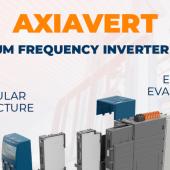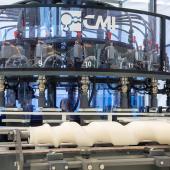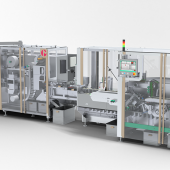Set-off in printed flexible materials
KNOWING TO EVALUATE Giflex and IRCPack have completed a project defining a method for verifying the adequacy of production processes and legality of raw materials used and supplies a tool for testing cases of contention. Below are the results of the research focused on risk evaluation of toxicological and sensory damage relating to set-off.
Valter Rocchelli, Mara Baronciani
Regulatory framework
Italian legislation has always taken into consideration the risk of contamination to packaged foodstuffs; law n. 283 of 1962 states «The materials... cannot transmit tastes or odors that negatively affect the food’s organoleptic properties and render it harmful».
This principle remained unchanged in subsequent legislative acts, in spite of technical and toxicological developments connected with the development of new materials, and it is also considered in EU legislation.
Indeed, the latest regulatory law enacted has been EC 1935/2004, which, under article 3 stipulates that «...materials and objects,... must not transmit such quantities to the food product as to:
α) constitute a danger to human health
β) entail an unacceptable modification to the composition of the food products or
χ) entail a deterioration of their sensorial characteristics».
Regulation (EC) 2023/2006 on good manufacturing practices for materials and objects destined to come into contact with food products, in relation to the specific regulations on good manufacturing practice and in the case of «Processes that entail the application of printing inks on the side of a material or object not in contact with the food product» establishes that:
1. Printing inks applied on the side of the materials or objects not in contact with the food product must be formulated and/or applied in such a way that the substances present on the printed surface are not transferred to the side in contact with the food product:
a) through the substrate or
b) by set-off in the stack or the reel, in concentrations that lead to levels of the substance in the food which are not in line with the requirements of Article 3 of Regulation (EC) No 1935/2004.
2. Printed objects and materials in finished or semi-processed form must be handled and stored in such a way that substances present on the printed surface are not transferred to the side in contact with the food product:
a) through the substrate or
b) by set-off in the stack or the reel, in concentrations that lead to levels of the substance in the food which are not in line with the requirements of Article 3 of Regulation (EC) No 1935/2004.
3. Printed surfaces shall not come into direct contact with the food product.
The regulatory framework thus requires that inks be formulated and processed according to GMPs in such a way that they do not transmit substances in such quantities as to constitute non-compliance with article 3 of CE 1935/2004.
Set-off evaluation protocol
In light of the information reported in the previous paragraph, it is necessary to evaluate toxicological damage risk, the object of this article, as well as sensory damage risk, which are both related to set-off.
On the basis of this necessity, IRCPACK and SEPACK-LAB have developed, in collaboration with Giflex, a member of Assografici, which unites flexible materials producers, a protocol for set-off evaluation of rotogravure and/or flexographic printed materials, films and laminates destined for the packaging of foodstuffs.
The protocol provides for:
• an analytic study that employs screening methods to monitor, by means of special instrumental techniques based mainly on gas chromatography/mass spectrometry of volatile, semi-volatile and non-volatile organic compounds contained in the inks. The analytic study focuses on both the material as a whole and the surface in contact with the foodstuff;
• an analysis of the data gathered in order to confirm the presence of compounds definable as “critical”, by nature or quantity.
In this case, the need expressed by Giflex was that the analytic methods provided for by the protocol should be usable in industry for production controls characterized by ease of execution, reliability of data and repeatability.
In light of these requirements, as well as on the experience of previous studies on issues of packaging/foodstuff interaction, in particular on evaluation of different types of printing inks - we have developed and perfected the analytic methods reported below.
Analytic methods
The instrumental techniques employed are based on gas chromatography/mass spectrometry for monitoring volatile, semi-volatile and non-volatile organic compounds present in printed materials or deriving from the inks.
The analytic study is performed both on the total quantity of material (level I screening analysis) and on the surface in direct contact with the foodstuff, to confirm any presence of compounds deriving from the printing inks (level II screening analysis).
Level I screening analysis. The broad spectrum of compounds to be monitored for necessitates the application of two methods that involve different sampling techniques, one to determine volatile compounds and the other non-volatile compounds.
1) Identification and semi-quantitative evaluation of volatile and semi-volatile organic compounds in proportion to total.
Method of analysis: static headspace of a conditioned sample of material in a 20 ml vial at 125 °C for 30 minutes following addition of internal standard (chlorobenzene). Sampling has been carried out using automatic static headspace followed by gas chromatography/mass spectrometry analysis. The method is in compliance with: UNI EN 13628-2 part 2 - industrial method - Sample conditioning: 125 °C for 30 minutes. Any residual solvents found to be present are quantified according to UNI regulation.
2) Identification and semi-quantitative evaluation of semi-volatile and non-volatile organic compounds in proportion to total.
Method of analysis: solvent extraction (n-hexane: 10 ml) of 1 dm2 sample, addition of internal standard and gas chromatography/mass spectrometry analysis.
Level II screening analysis. Identification and semi-quantitative evaluation of semi-volatile and non-volatile organic compounds on the inner surface of the film. Method of analysis: washing of 2 dm2 of inner surface using short contact (10 minutes for each side) with an adequate volume of n-hexane containing an internal standard. The solvent is analyzed using gas chromatography/mass spectrometry.
The conditions described are arbitrary and mainly correspond to the need for answers in short time. The results can be considered conclusive only under certain conditions, such as confirming the presence/absence of peaks. In the first case it could be necessary to carry out a closer investigation with standard contact methods, for example 2gg isooctane at 20 °C or 95% ethanol for 10 days; so specific migrations must be set up. In these cases, the result, except for unidentified peaks, of course, will be quantitative.
Expression of the results
Reports shall include presentation of chomatograms appropriately integrated, along with corresponding tables showing:
• time retention (TR) of the peak that also appears on the chromatogram;
• identification through comparison of mass spectrometries with those in the library (WILEY275K) managed by the analytic system’s software;
• identification qualities, meaning the overlap between the peak spectrum and control one found in the libraries of used spectra (maximum 100 - acceptable > 70);
• semi-quantitative evaluation: the methods are not quantitative, but in order to obtain an estimate of the concentrations of compounds found in the headspace or in the extraction and wash solvents, we have expressed, in μg/dm2 the “semi-quantitative” evaluation, attributing to the various peaks (identified and unidentified) the response factor of the added internal standards calculated on the basis of the area of the peaks themselves.
At the bottom of the table are reported:
• analytic sensitivity with reference to the internal standard used;
• % uncertainty of semi-quantitative data
• any notes referring to the chromatogram or tables.
The wording “unidentified” means that a peak’s spectrum is not comparable to any of those present in the spectrum libraries available to the laboratory. In this case the peak is flagged in the table as “unidentified” and the main ions that characterize its mass spectrometry are named.
Semi-quantitative or quantitative evaluation. As far as concerns level I screening analysis, output is first of all semi-quantitative and reports the concentrations of compounds detected, obtained by applying the response factor of the internal standard.
This system of calculation represents an approximation because the “precision” of a semi-quantitative datum is influenced, in the screening analyses here described, by various factors:
• “full scan - TIC” acquisition of the mass selection detector is less precise, for measuring peak areas, than “SIM - single ion monitoring”, used in quantitative analyses;
• there is also a considerable response difference between different compounds and the internal standard;
• in the headspace analysis, the different proportions of matrix/headspace are also taken into consideration.
However, the gas/mass analytic systems used by Sepack-Lab enable simultaneous “TIC” and “SIM” acquisition. It is therefore possible, with the same analysis, to have a qualitative or semi-quantitative screening and at the same time a quantitative analysis of calibrated compounds.
For example, headspace analysis also supplies quantitative analysis of residual solvents and other compounds that may have been calibrated in accordance with industrial method standard UNI EN 13628-2 part 2.
The same occurs for analysis of the solvent extract analysis of the total sample: at the same time as the screening data it is possible to make a quantitative determination of the other compounds as plasticizers, photoinitiators, anti-oxidants, lubricants, etc.
Validity of methods
The methods have been authenticated through repeatability tests, for each method, in which 10 repetitions were performed on each sample.
Tables 1, 2 and 3 show the results obtained, but also: TR = peak retention time, Average = average value expressed in μg/dm2, σ= standard deviation, RSD% =relative standard deviation percentage.
Furthermore, in a small circuit of 4 laboratories, an inter-laboratory test was carried out; participants were sent 4 samples of film to analyze and an operational procedure to follow in order to apply the set-off evaluation protocol (as defined by us).
The small number of participants does not permit statistical analysis, and so the results reported under tables 4, 5 and 6 are considered merely indicative and comparative among participant laboratories.
Evaluation and interpretation of findings Set-off evaluation is not a simple analysis but a rather complex evaluative study of risk and as such should be drawn up in a report. IRCPACK and Sepack-Lab have developed guidelines for drafting technical reports on set-off studies. The layout of the technical report includes, in addition to essential report features (laboratory, sponsor, sample arrival date, analysis findings, sample identification) also the following information:
• description of analytic methods applied;
• criteria for expressing data;
• chromatograms in total ionic current;
• tables of compounds detected with corresponding semi-quantitative evaluation;
• indication of “analytic sensitivity” with reference to the internal standard used;
• % uncertainty of semi-quantitative data.
Up to this point it is a report on analyses carried out.
From this point onward it becomes a technical report on risk evaluation that involves three operational steps:
1. Hazard identification
2. Risk characterization
3. Risk Evaluation
Step n. 1 relates to the findings of the analysis.
Step n. 2 involves acquiring information on the compounds identified through comparison of regulatory and other documentation: positive lists of (EC) 10/2011 of DM21/3/73; EFSA opinions; COE inventory lists and documents; non-European regulations such as Swiss Ordinance 817.023.21, FDA, etc.; recommendations, for example BFR; List of permitted food additives, for example the EU regulation n. 872/2012 of the European Commission on 01/10/2012; EUPIA exclusion list, a voluntary regulation with which European ink producers commit to not use the compounds listed because they pose a threat to human health; carcinogenic compound database.
Step n. 3 evaluates the information acquired during step n. 2.
All compounds fall under one of the following categories:
• If the compound is identified and is present in a positive list with a restriction such as specific migration, the quantity detected in the material is compared with any specific migration limit listed for the compound; if the theoretical specific migration value (calculated by assuming 100% migration) is below the specific migration limit, the situation is NOT critical: on the contrary, it is necessary to confirm respect of the SML by monitoring the presence of the compound on the inner surface and/or by conducting specific migration tests with the necessary simulations for the specific case.
• If the compound is identified but is not present in any positive list, it should firstly be ruled out as a possible CMR (carcinogenic, mutagenic or reprotoxic), and confirmed absent from the EUPIA exclusion list. A second level of research entails gathering already existing toxicological data (acute toxicity), on the basis of which the appropriate evaluations can be made. It should be kept in mind, in any case, that an unlisted non-CMR compound cannot exceed a specific migration value of 0.01 mg/kg; this reference value defines the functional barrier of a layer in contact with foodstuffs for unlisted compounds.
• If the compound is unlisted but is a permitted food additive, any presence or migration is not to be considered critical.
• If the compound is unidentified, it means that the peak spectrum is not comparable with any of those included in the spectrum libraries. In this case, it is not possible to evaluate toxicity and is therefore necessary, if effective migration risks persist (presence on inner surface), to understand in which raw material it originates (ink, adhesive, support) and, consequently, evaluate the possibility of identification with the producer of the raw material in question.
The conclusions of the set-off evaluation will be treated according to considerations on the compounds detected and will flag the presence or absence of critical risk of toxicological damage and the indication of any actions to be undertaken in the latter case.
For example, the presence of an unlisted CMR compound or a compound on the EUPIA exclusion list represents an at least critical situation, if not one of non-compliance with Reg. (EC) 1935/2004 art. 3.
In that case, further analyses must be carried out in order to confirm which component or process phase could have introduced the compound and, consequently, to take any actions to “eliminate” it.
Conclusions
The set-off evaluation protocol has been applied “in the field” in the context of a study sponsored by Giflex to identify and evaluate the set-off situation of various types of printed flexible materials.
The study, executed in three phases, considered 75 samples of flexible materials, rotogravure or flexographically printed by approximately 20 converters; the various structures and combinations of materials were taken into consideration: monofilm, double and triple laminates, printing inside, printing outside. The findings were processed and show evidence for the considerations expressed below. Volatile organic compounds. Other than expected residual solvents, aliphatic hydrocarbons were also found, deriving from oligomeric fractions more volatile than polyolefin films; in no case were critical situations having to do with volatile compounds found.
Non-volatile organic compounds. The analyses mostly showed the presence of plasticizers used; most of these plasticizers are found in positive lists of plastic materials. A few “unidentified” peaks were also detected; most of these were subsequently attributed to well-defined compounds deriving from raw materials other than the inks, thanks to a collaboration with the entire production chain.
The research conducted has confirmed that the methods used respond to needs of simplicity, reliability and repeatability.
Such methods have also proven suitable, albeit with appropriate changes required by the presence of materials other than plastic, as well as for the set-off evaluation of materials like paper and cardboard, coatings like lacquered aluminium and rigid plastic. The same methods can be used to evaluate the risk of toxicological damage due to organic compounds, for any type of material destined for contact with foodstuffs.
Valter Rocchelli, IRCpack srl
Mara Baronciani, Sepack-lab Srl
|
Giflex and set-off: reasons for a study The Italian association of flexible packaging manufacturers – Giflex has always kept a close eye on the technical and legal issues that concern the food packaging supply chain. The necessity to fully comply with the requirements of law and, in first place, to voluntarily guarantee the absolute safety of products made, has led the group to invest human and economic resources in practical testing and research, with the objective of supplying associate concerns effective tools for guaranteeing the high safety standards required. In light of this, the fruitful collaboration between Giflex and IRCPACK has resulted in the development of a control method capable of responding to the provisions stipulated in the European Regulation (EC) 2023/2006, better known as GMPs. The method enables verifying the adequacy of a production process and the compliance of raw materials used and supplies a control method in cases of contention. Thanks to the professionalism and competencies of the authors of this study, during the course of the research, it emerged that the quality and mole of data collected enabled giving the entire study a broader scope, extending the analysis to the risk evaluation models in compliance with the most recent orientations of the laws on materials in contact with food products. (Eng. Italo Vailati) |
Valter Rocchelli, IRCpack srl
Mara Baronciani, Sepack-lab Srl

 Download article
Download article















